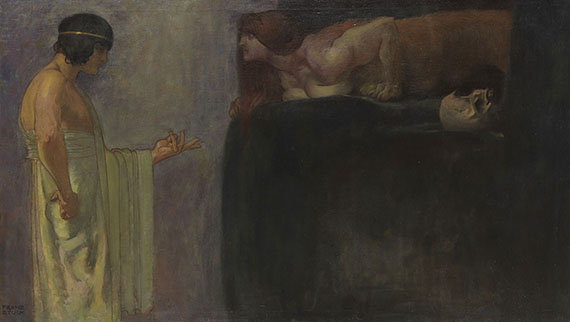Dictionary


London Group
The London Group exhibition association was founded in November 1913 by members of the Camden Town group, and various independent avant-garde artists. The first members included David Bomberg, Henri Gaudier-Brzeska, Jacob Epstein, Charles Ginner, Spencer Gore, Percy Wyndham Lewis, John Nash, Christopher Nevinson and Edward Wadsworth. Harold Gilman was the group’s first president, until he fell victim to the Spanish flu in 1919. During World War One, the Vorticists Edward Wadsworth and Percy Wyndham Lewis and Jacob Epstein left the group, and Henri Gaudier-Brzeska and Spencer Gore were killed in action. The London Group held two exhibitions annually until 1930, and thereafter held one per year. The group had no homogeneous style, and was influenced by Cubism, Vorticism, and Post-Impressionism. Thus the group’s first exhibition, which took place in Brighton in 1913/14 was entitled "An Exhibition of the Work of English Post-Impressionists, Cubists and Others". The first exhibition the name the "London Group", took place in 1914. The group was unified by its avant-garde, progressive, and stylistically independent attitude, which stood in opposition to the conservative Royal Academy. The group maintained this stance throughout its existence. Post-1910, the Bloomsbury Group artists Roger Fry, Vanessa Bell and Duncan Grant gained influence within the group. In the 1920s, Frank Dobson, Mark Gertler and Matthew Smith were the most important artists working within the London group. Sculpture also played a significant role, with Henry Moore, Barbara Hepworth, Maurice Lambert and John Skeaping joining the group in 1930. In the late 1930s, the London Group acted as a key forum for the Euston Road realists.
The London Group exhibition association was founded in November 1913 by members of the Camden Town group, and various independent avant-garde artists. The first members included David Bomberg, Henri Gaudier-Brzeska, Jacob Epstein, Charles Ginner, Spencer Gore, Percy Wyndham Lewis, John Nash, Christopher Nevinson and Edward Wadsworth. Harold Gilman was the group’s first president, until he fell victim to the Spanish flu in 1919. During World War One, the Vorticists Edward Wadsworth and Percy Wyndham Lewis and Jacob Epstein left the group, and Henri Gaudier-Brzeska and Spencer Gore were killed in action. The London Group held two exhibitions annually until 1930, and thereafter held one per year. The group had no homogeneous style, and was influenced by Cubism, Vorticism, and Post-Impressionism. Thus the group’s first exhibition, which took place in Brighton in 1913/14 was entitled "An Exhibition of the Work of English Post-Impressionists, Cubists and Others". The first exhibition the name the "London Group", took place in 1914. The group was unified by its avant-garde, progressive, and stylistically independent attitude, which stood in opposition to the conservative Royal Academy. The group maintained this stance throughout its existence. Post-1910, the Bloomsbury Group artists Roger Fry, Vanessa Bell and Duncan Grant gained influence within the group. In the 1920s, Frank Dobson, Mark Gertler and Matthew Smith were the most important artists working within the London group. Sculpture also played a significant role, with Henry Moore, Barbara Hepworth, Maurice Lambert and John Skeaping joining the group in 1930. In the late 1930s, the London Group acted as a key forum for the Euston Road realists.
Offers
Headquarters
Joseph-Wild-Str. 18
81829 Munich
Phone: +49 89 55 244-0
Fax: +49 89 55 244-177
info@kettererkunst.de
Louisa von Saucken / Undine Schleifer
Holstenwall 5
20355 Hamburg
Phone: +49 40 37 49 61-0
Fax: +49 40 37 49 61-66
infohamburg@kettererkunst.de
Dr. Simone Wiechers / Nane Schlage
Fasanenstr. 70
10719 Berlin
Phone: +49 30 88 67 53-63
Fax: +49 30 88 67 56-43
infoberlin@kettererkunst.de
Cordula Lichtenberg
Gertrudenstraße 24-28
50667 Cologne
Phone: +49 221 510 908-15
infokoeln@kettererkunst.de
Hessen
Rhineland-Palatinate
Miriam Heß
Phone: +49 62 21 58 80-038
Fax: +49 62 21 58 80-595
infoheidelberg@kettererkunst.de
We will inform you in time.




